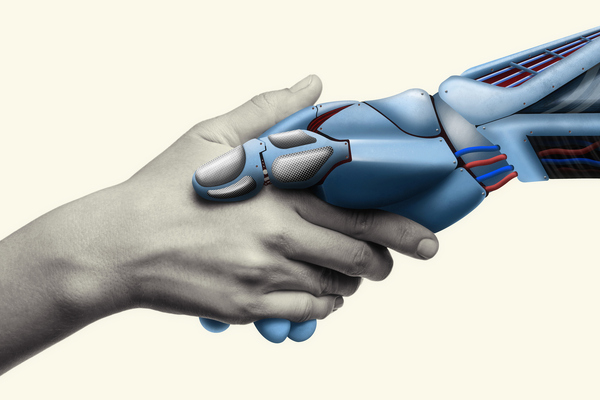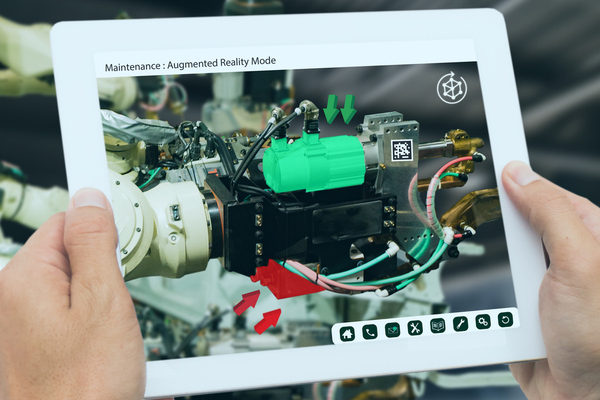The future of enterprise relies on resilient networks, available everywhere
Sponsored by SES
Networks are the lifeblood of every enterprise, enabling core capabilities and connecting locations, people and technology. Many of today’s business-critical systems and data are stored, processed and analysed in the cloud, so cloud connectivity – from any place at any time – is vital to keeping daily operations running smoothly.
While terrestrial (fibre-based) networks are often considered the standard method for connectivity, innovations in satellite technology have resulted in networks with greater performance, flexibility, resilience and reach that provide high-capacity connections to sites all over the world. This includes reaching the most challenging locations with the harshest conditions, which is important for supporting data-driven companies and industries, but also building resilience into core networks, so that these can handle unexpected accidental or even intentional disruptions without compromising business-critical operations.
Reaching new heights with modern satellites
Satellite technology has evolved with innovations that provide several benefits to enterprises, including a new generation of software-enabled satellites that respond dynamically to user demand, innovative ground systems that enable users to land traffic at a managed or private gateway or a cloud data centre, and software systems that synchronise space and ground systems to allocate bandwidth when and where needed. These benefits can protect the integrity of daily operations, drive greater efficiency and add value to the business.
Flexibility
Satellite technology offers flexibility in deployment, allowing connectivity in hard-to-reach areas without traditional infrastructure such as fibre or subsea cables. Popular applications include cruise ships, offshore oil rigs and mining operations in mountainous regions.
There are three main types of satellite systems: geosynchronous orbit (GEO), medium earth orbit (MEO) and low earth orbit (LEO). While MEO and LEO satellites are closer to the Earth and offer low latencies, they are not stationary, which means a constellation of satellites is required to provide continuous service. Each orbit has its advantages and benefits, but a multi-orbit strategy that utilises a combination of these systems allows for customisation of the right solution to meet specific customer requirements.
SES owns and operates the world’s only GEO-MEO constellation, and with access to LEO solutions via strategic partnerships, the company is uniquely positioned as an all-orbit solutions provider. This multi-orbit approach maximises flexibility and truly unlocks the full capabilities of satellite technology in a way that solves the business and technology challenges for enterprise customers.
High resilience for disruptive events
It is well known that satellites play an important role in disaster recovery efforts, rapidly helping to restore critical communications after natural disasters, but they also offer a redundancy solution after fibre cable cuts and other communications network failures. Increasingly, governments and enterprises are taking a more proactive approach by incorporating satellite solutions into their network resilience strategy before disasters strike, so that communications can be restored faster – or never fail at all.
Many industrial environments such as energy, mining and manufacturing are rethinking their resilience strategy and shifting their recovery-oriented resilience needs towards proactive innovation and investment in technologies that allow for digitalisation and automation. These industries can benefit from satellite connectivity, especially in remote and challenging environments where traditional connectivity options are limited.
Integration with terrestrial networks
Working seamlessly with terrestrial networks is important to delivering an optimal network experience for the customer. New advancements have improved the interoperability between satellite networks and the existing ground infrastructure. Virtualisation, artificial intelligence and other tools are enabling satellite and terrestrial networks to work closely together as a single, combined system. The organisations and people using it cannot tell if they are using a wired or satellite connection – they just know that the network works, with high reliability and performance.
Higher performance
Satellite networks are now providing multi-gigabit capacity from space to enterprises around the world, delivering low latency to support critical applications. This type of capacity was previously available only from ground-based fibre networks, but now is delivered via satellite to enterprises around the world.
Higher network performance opens new doors for organisations in remote locations, such as on an island, or in rural, unpopulated areas that lack high-speed connectivity. This fibre-like performance can level the playing field for an enterprise that may have hundreds or thousands of locations and facilities located all over the world. And this performance can play a role in helping distributed organisations stay connected in the modern era of remote workers. O3b mPOWER, SES’s second-generation MEO constellation, is now delivering industry-leading performance, resilience and flexibility for enterprises, governments and the maritime and aviation industries.
Emerging use cases for satellite networks
Due to the advancement of satellite technology and its increased capabilities, satellites have become more relevant in today’s world. Along with digital transformation, enterprises, governments and other organisations are embracing new technologies and systems that rely upon satellites to operate effectively.
Enabling digital transformations
Satellite communications support digital transformation initiatives by providing high-performance connectivity, which helps deliver real-time data and insights.
For example, industries such as energy and mining leverage satellite connectivity to connect remote locations such as oil rigs and mining excavation sites, gathering and transmitting data that can be stored and processed in the cloud. This data can lead to insights that improve efficiency, reduce costs and provide a competitive advantage. It enables companies to move away from manual-based operations, work smarter and safer, move faster and transform into true data-driven organisations.
Satellite networks can also play a key role in the delivery of private 5G networks to enterprises, with the capacity and global reach to provide backhaul connectivity and extend coverage out to remote locations and hard-to-reach geographies. For example, islands or industrial use-cases such as offshore oil rigs cannot be reached by fibre cables.
Additionally, enterprises can leverage satellites for edge computing projects to take advantage of network slicing, flexibility, and to bring content delivery closer to consumers, enhancing the user experience and improving efficiency.
Enabling temporary events with dynamic networks
Satellites are well suited to provide a temporary connection, or extra capacity, for special one-time events, such as a convention, sporting event, concert or other gathering where thousands of people assemble for a short period of time but need to stay connected.
When Papua New Guinea hosted the 26th Asia-Pacific Economic Cooperation (APEC) Summit, it turned to satellite to meet the event requirements, enabling secure government-to-government communications, live media broadcasts, and the specialised needs of land, sea and air forces synchronising security around venues and meetings.
Satellite technology can dynamically increase or decrease capacity from space in an on-demand fashion, without adding additional infrastructure. Known as “communications on the pause,” these temporary networks can be in place for days or weeks, with higher or lower performance, adjusting to the needs of a particular situation.
New developments in satellite technology can provide enterprises with flexible, resilient and high-performance connectivity that solves both business and technology challenges. With the ability to reach remote locations, enable digital transformations, support emerging use cases such as edge computing and private 5G, and offer capacity on demand, satellite communications are poised to play a vital role in improving operational efficiency for a wide range of industries and organisations. As satellite operators such as SES continue innovating with multi-orbit strategies and virtualisation, the integration of satellite and terrestrial networks will deliver a seamless, global connectivity experience optimised for each enterprise’s unique requirements.
For more information, download the SES Insight Paper.
By Nadine Allen, Global Head of Enterprise and Cloud, SES

Nadine Allen joined SES as Global Head of Enterprise & Cloud in January 2024.
Prior to SES, Nadine held a variety of leadership positions in the telecommunications and enterprise sectors for Ericsson and Marconi. In her last position, Nadine was head of Ericsson’s Enterprise Business and Strategy for Southeast Asia, India and Oceania, where she was accountable for building growth businesses in the areas of 5G, private networks, cloud, security and IoT as well as strategy development and execution across the region.
Before that she was CEO of Ericsson Thailand, Head of Global Customer Unit Telenor group and Head of Enterprise Business in Western Central Europe.
Nadine is a UK national and holds an MBA from the University of Warwick (UK).

Business Reporter Team
Related Articles
Most Viewed
23-29 Hendon Lane, London, N3 1RT
23-29 Hendon Lane, London, N3 1RT
020 8349 4363
© 2024, Lyonsdown Limited. Business Reporter® is a registered trademark of Lyonsdown Ltd. VAT registration number: 830519543





